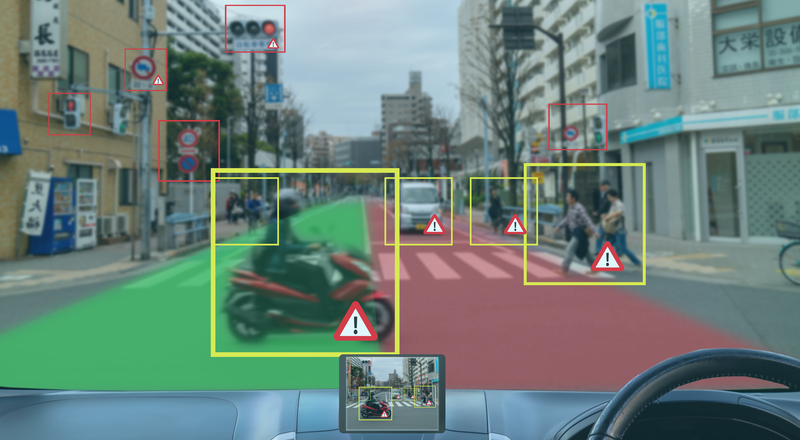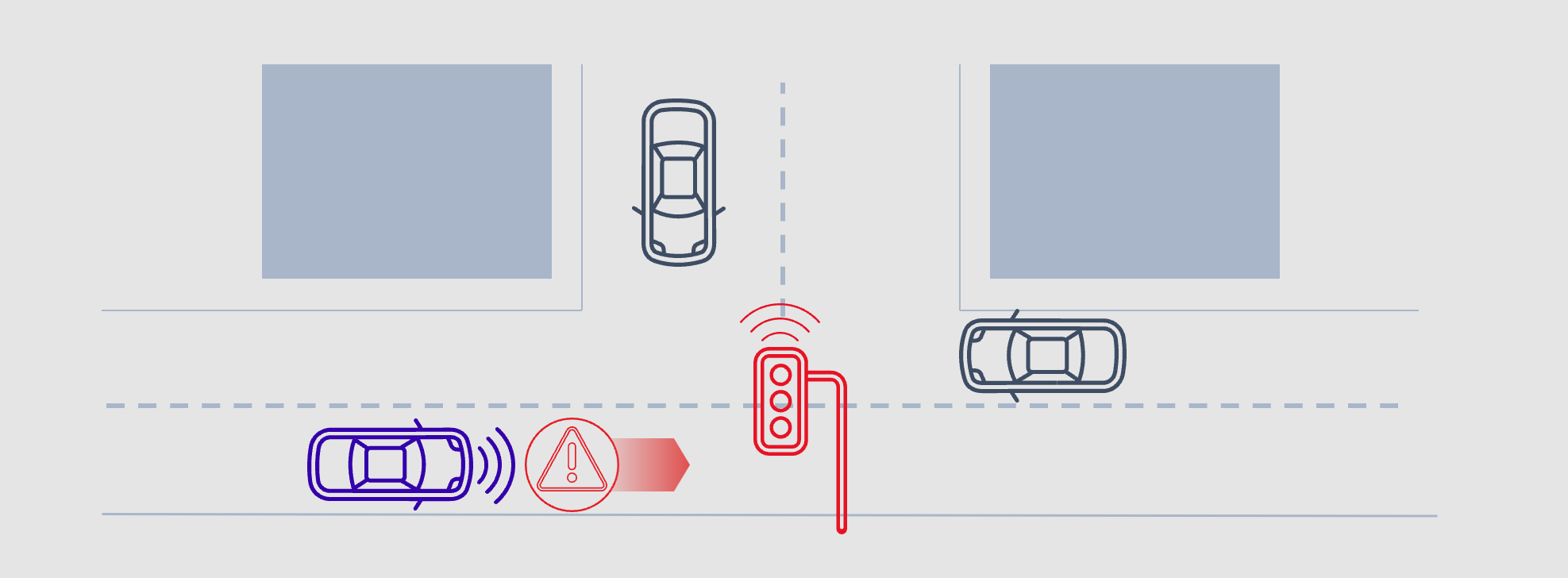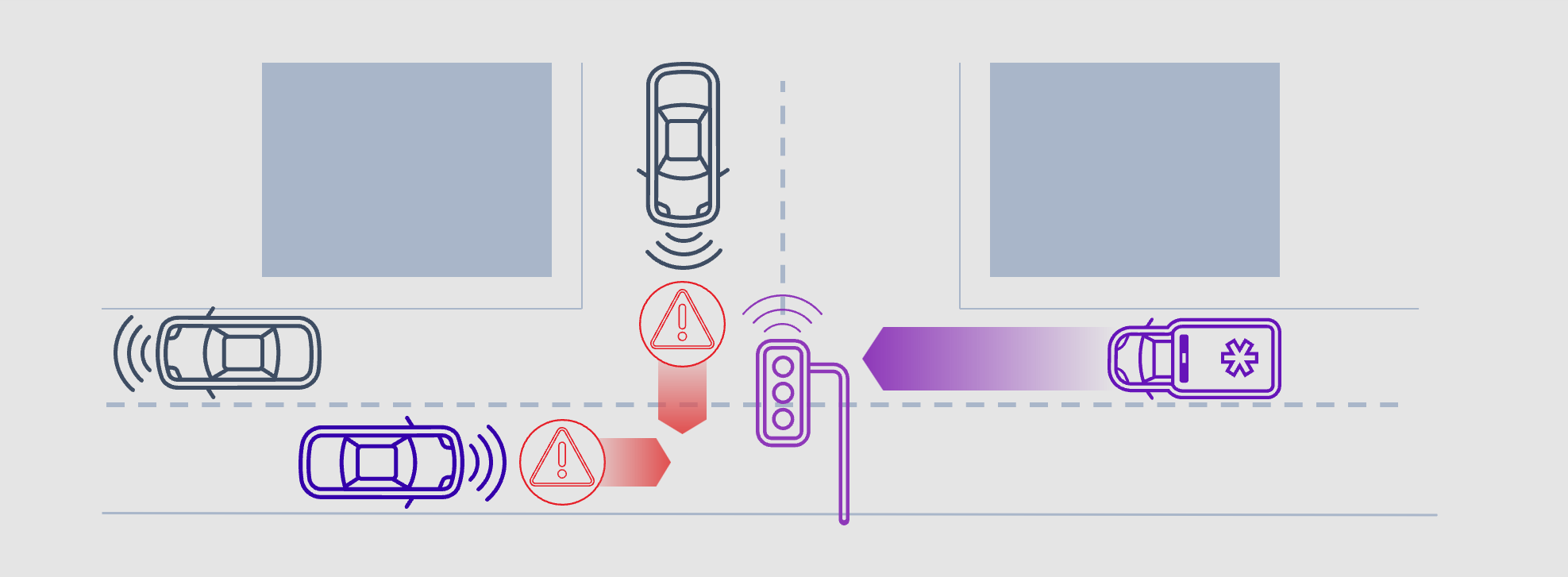
Advances in technology are making modern vehicles and roadside infrastructure more connected than ever before. As more vehicles become connected to each other, other road users and the surrounding infrastructure, their ability to communicate directly will inform applications that have an immediate impact on safety – while generating near real-time data that can inform transportation services, making personal travel more convenient and transportation system management more efficient. And it can’t happen soon enough. According to the World Health Organisation approximately 1.3 million people are killed and as many as 50 million are injured every year in traffic incidents1.
To combat this leading cause of death and disability worldwide, many in the global transportation community have adopted a safe systems approach that aims to ensure safety for all road users. This holistic and comprehensive approach to safety includes building and reinforcing multiple layers of protection to prevent crashes from happening and to minimise the harm caused when they do. Qualcomm recently joined Allies in Action to show our support for the US Department of Transportation’s National Roadway Safety Strategy, which adopts this approach.
The technologies in our Snapdragon® Digital Chassis™ solution keep vehicles connected and allow them to sense their surroundings to help make travel safer. This connectivity even extends beyond line-of-sight with cellular Vehicle to Everything (C-V2X) – a wireless technology that allows vehicles to communicate directly with each other (V2V), with roadside infrastructure (V2I) and potentially with pedestrians and other vulnerable road users (V2P).
C-V2X supports information sharing to facilitate applications that enhance safety for all road users. This real-time traffic data exchanged among vehicles and road infrastructure can also be shared over cellular networks to complement the time-critical safety applications delivered by direct communication. This holistic approach leveraging cloud connectivity adds more information to make travel and navigation choices more convenient to use; moreover, it helps make the entire transportation system more efficient.
Enhancing Safety on Day 1
Many of the fatalities that occur on roadways are preventable. The National Highway Traffic Safety Administration believes that safety applications supported by V2V and V2I could eliminate or mitigate the severity of up to 80% of non-impaired crashes in the US2. Qualcomm Technologies is supporting industry stakeholders with C-V2X deployments, focusing on Day 1 use cases that can have an immediate safety impact.
Examples of V2I applications
Red light violation warning
The most common cause of all urban crashes, drivers running red lights result in an average of seven fatalities and more than 1,000 injuries per day at signalized intersections across the country3.

Emergency vehicle pre-emption
Allowing vehicles like ambulances and fire trucks to remotely trigger a green light shortens emergency response time to help save lives. Related V2V apps can share this information so nearby drivers can take action to move out of the way.

Examples of V2V applications
Do not pass warning
Alerts the driver that it is not safe to pass a slower vehicle when the passing lane is occupied by another vehicle.

Intersection movement assist
Warns the driver when it’s not safe to enter an intersection. For example, when another vehicle runs a red light or makes a sudden turn.

Empowering the transportation ecosystem
In addition to immediately enhancing safety with Day 1 use cases, C-V2X technology performs the double-duty of delivering mobility benefits. Using complementary cellular and cloud connectivity can increase awareness for safety applications while also laying the foundation for the ecosystem to create and deliver new transportation services.
Highly accurate and granular data generated from V2X exchanges can be harnessed in a centralised cloud-based repository to inform services that further enhance safety, transportation systems management and fleet operations, and personal travel experiences. Whether deployed at the local agency, regional or state level a cloud-based system that is connected to mobile networks enables data-driven transportation management services while also exposing relevant information to enterprise and public sector service providers interested in developing more purpose-built applications.
Using both static and operationally dynamic information from sensing and perception technologies, a cloud-connected system can help to manage transportation systems for more efficient movement of goods, services, and people. This flavor of V2X data provides transportation planners with insights into demand, helping them to determine optimal deployment of transportation infrastructure, advanced transit services, and placement of ITS-enabled transportation pricing and demand management equipment such as electronic road user charging or variable parking fees. This increased automation can help to influence daily travel decisions – either by offering incentives for off-peak travel, ride-sharing or changed departure times, and/or implementing dynamic pricing to adjust road user charging based on congestion.
Emerging use cases for V2X data include electronic toll collection for a better user experience and less starting and stopping to reduce congestion, freight signal priority for more efficient delivery of goods, and mobility-on-demand services for more timely and efficient travel experiences. Below are some additional examples of how a cloud-enhanced systems provides flexibility for creating new business models when deploying V2X services.
 Fleet management
Fleet management
Connected fleets can be updated over-the-air to ensure they’re up to date with the latest technologies, tracked in real-time including geofence alerts, and targeted for reallocation for logistics purposes. Using a cloud-based system also allows road and fleet managers to stay connected to end users with on-demand services for ongoing monetisation opportunities.
 Micromobility
Micromobility
When connected to the cloud, micromobility devices can be ready on demand and better serve as a connector in a trip – they can also provide riders with timely information to enhance safety and travel efficiency, as well as services to customise their riding experience such as real-time navigation.
 Electric vehicle (EV) charging stations
Electric vehicle (EV) charging stations
EV charging infrastructure could be used to support driver safety and convenience, while also helping to improve environmental sustainability. Service providers could proactively recommend compatible charging stations for those needing to refuel, while also broadcasting traffic information along highways to alert drivers of slow traffic or inclement weather.
Next steps
Watch the recent ITS America webinar Improving Safety and E-mobility through Connectivity to learn more about the opportunity for the transportation ecosystem to create new revenue-generating services.
Get an overview of C-V2X technology with this 1-hour Introduction to C-V2X course offered through the Qualcomm Wireless Academy – free with offer code CV2X23.
Visit Qualcomm.com/Automotive for more information about Qualcomm and our technologies.
Snapdragon and Qualcomm branded products are products of Qualcomm Technologies, Inc. and/or its subsidiaries.
ABOUT THE AUTHOR:
Jim Misener is Sr. Director, Product Management and Global V2X Ecosystem Lead at Qualcomm Technologies, Inc.
References
1 https://www.who.int/news-room/fact-sheets/detail/road-traffic-injuries
2 https://rosap.ntl.bts.gov/view/dot/12066
3 https://highways.dot.gov/research/research-programs/safety/intersection-safety
Content produced in association with Qualcomm Technologies





